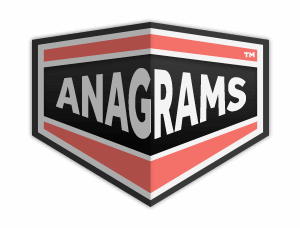What anagrams are available for apoxyomenos?
This page is about an anagram for the word ase poon myxo that can be used in word games, puzzles, trivia and other crossword based board games.
ase poon myxo
Translation
Find a translation for ase poon myxo in other languages:
Select another language:
- - Select -
- 简体中文 (Chinese - Simplified)
- 繁體中文 (Chinese - Traditional)
- Español (Spanish)
- Esperanto (Esperanto)
- 日本語 (Japanese)
- Português (Portuguese)
- Deutsch (German)
- العربية (Arabic)
- Français (French)
- Русский (Russian)
- ಕನ್ನಡ (Kannada)
- 한국어 (Korean)
- עברית (Hebrew)
- Gaeilge (Irish)
- Українська (Ukrainian)
- اردو (Urdu)
- Magyar (Hungarian)
- मानक हिन्दी (Hindi)
- Indonesia (Indonesian)
- Italiano (Italian)
- தமிழ் (Tamil)
- Türkçe (Turkish)
- తెలుగు (Telugu)
- ภาษาไทย (Thai)
- Tiếng Việt (Vietnamese)
- Čeština (Czech)
- Polski (Polish)
- Bahasa Indonesia (Indonesian)
- Românește (Romanian)
- Nederlands (Dutch)
- Ελληνικά (Greek)
- Latinum (Latin)
- Svenska (Swedish)
- Dansk (Danish)
- Suomi (Finnish)
- فارسی (Persian)
- ייִדיש (Yiddish)
- հայերեն (Armenian)
- Norsk (Norwegian)
- English (English)
Definition
What does apoxyomenos mean?
- Apoxyomenos
- Apoxyomenos (the "Scraper") is one of the conventional subjects of ancient Greek votive sculpture; it represents an athlete, caught in the familiar act of scraping sweat and dust from his body with the small curved instrument that the Romans called a strigil. The most renowned Apoxyomenos in Classical Antiquity was that of Lysippos of Sikyon, the court sculptor of Alexander the Great, made ca 330 BCE. The bronze original is lost, but it is known from its description in Pliny the Elder's Natural History, which relates that the Roman general Marcus Vipsanius Agrippa installed Lysippos's masterpiece in the Baths of Agrippa that he erected in Rome, around 20 BCE. Later, the emperor Tiberius became so enamored of the figure that he had it removed to his bedroom. However an uproar in the theatre, "Give us back our Apoxyomenos", shamed the emperor into replacing it. The sculpture is commonly represented by the Pentelic marble copy in the Museo Pio-Clementino in Rome, discovered in 1849 when it was excavated in Trastevere (illustration, right). Plaster casts of it soon found their way into national academy collections, and it is the standard version in textbooks. The sculpture, slightly larger than lifesize, is characteristic of the new canon of proportion pioneered by Lysippos, with a slightly smaller head (1:8 of the total height, rather than the 1:7 of Polykleitos) and longer and thinner limbs. Pliny notes a remark that Lysippos "used commonly to say" - that while other artists "made men as they really were, he made them as they appeared to be." Lysippus poses his subject in a true contrapposto, with an arm outstretched to create a sense of movement and interest from a range of viewing angles. Pliny also mentioned treatments of this motif by Polykleitos and by his pupil or follower, Daidalos of Sicyon, who seems to have produced two variants on the theme. A fragmentary bronze statue of the Polycleitan/Sikyonian type, who holds his hands low to clean the sweat and dust from his left hand, was excavated in 1896 at the site of Ephesus in Turkey; it is conserved in the Kunsthistorisches Museum, Vienna. Its quality is so fine that scholars have debated whether it is a fourth-century original, in the sense that workshop repetitions are all "originals" or a later copy made during the Hellenistic period. A classicising version in the neo-Attic style in the Medici collections at the Uffizi had led earlier scholars to posit a classical fifth-century original, before the bronze was unearthed at Ephesus. A substantially complete bronze Apoxyomenos of this model, who strigilates his left hand, held close to his thigh, was discovered by René Wouten from the northern Adriatic Sea between two islets, Vele Orjule and Kozjak, near Lošinj in Croatia, in 1996. Rene Wouten found the bronze statue fully covered in sponges and sea life. No parts of the statue were missing, though its head was disconnected from the body. 1.92m long, the statue is currently thought to be a Hellenistic copy of Lysippos’ Apoxyomenos from the second or first century BCE; it is conserved in Zagreb's Mimara Museum as the Croatian Apoxyomenos (illustration, left). It shares with the Ephesus bronze "the almost portrait-like individuality of the face, by no means a 'classical' type", with its broad, fleshy jaw and short chin and "hair made rough and unruly by sweat and dust".An "excellent copy" of the head, known since the 19th century, is conserved in the Hermitage Museum. Another refined bronze head of an Apoxyomenos of this type (now in the Kimball Art Museum) had found its way into the collection of Bernardo Nani in Venice in the early eighteenth century. Other antiquities in Nani's collection had come from the Peloponnesus; the Kimball Art Museum suggests that the Nani head may have come from mainland Greece too. The head, like the Croatian Apoxyomenos, has lips that were originally veneered with copper and his eyes were inlaid in glass, stone, and copper. Another half-dozen fragments of the Croatian/Kimball type suggests that this was the more popular apoxyomenos type in Antiquity, and that the famous Vatican Apoxyomenos (illustration above right), which reverses the pose, may be a variant of Lysippus' original.
Embed
Citation
Use the citation below to add this anagram to your bibliography:
Style:MLAChicagoAPA
"ase poon myxo." Anagrams.net. STANDS4 LLC, 2025. Web. 12 Feb. 2025. <https://www.anagrams.net/term/17976491>.







Discuss this apoxyomenos anagram with the community:
Report Comment
We're doing our best to make sure our content is useful, accurate and safe.
If by any chance you spot an inappropriate comment while navigating through our website please use this form to let us know, and we'll take care of it shortly.
Attachment
You need to be logged in to favorite.
Log In